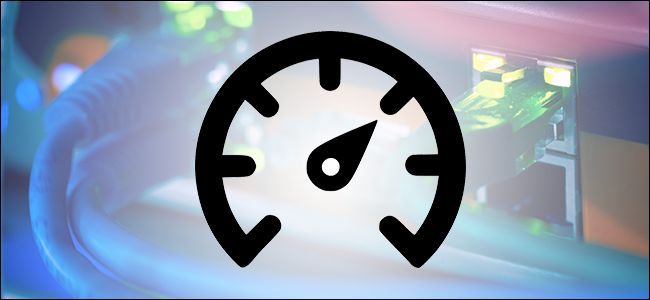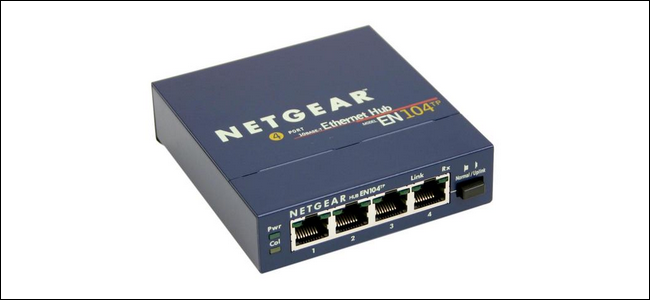Quick Links
You pay good money for your speedy broadband connection, and it would be a shame if a poor hardware choice was hampering your network. Are network switches to blame for your slow connection?
We get a not-insignificant number of reader inquiries about network hardware, especially concerns over whether or not a network switch is to blame for home network problems---primarily issues with connection speed and stability. Despite the suspicion that so many people seem intent on casting towards the poor network switch, it's very rarely the source of network problems.
Like all statements regarding technology, however, there's always and exception or two. Let's take a moment to rule out any of the problems you might have with a network switch that could actually impact your network speed.
Your Switch Is Actually a Hub
Hands down, with very few exceptions, when we're helping someone troubleshoot performance performance problems after installing a switch, the switch is....well, not a switch at all.
You can read more about the difference between switches and hubs here, but here's the gist. A hub and a switch look physically similar: they have X number of ports (typically in multiples of 4 like 4, 8, 16, 24, and so on) with one reserved for use as an input or a totally separate port labeled "uplink". Despite their nearly identical appearance, however, the guts of the two pieces of network hardware are quite different.
A hub is a "dumb" device in that it broadcasts whatever it hears on the input port to all the output ports. This leads to collisions between data packets and a general degrading of network quality. If you have a hub set up between your router and the rest of your network, you're setting yourself up for a huge headache.
A switch, on the other hand, is much smarter. It actively manages the connections between the input port and the output ports, so you won't run into the collision problem or any of the other issues that plague hubs.
If you purchased the device in question within the last few years, the chance is almost zero that it's a hub. Historically, switches were expensive and hubs were cheap, but advances in technology have made switches so cheap that they don't even bother making hubs anymore. If you fished your "switch" out of an old box in the corner of your basement or bought it dirt cheap at a surplus sale, look up the model number online and confirm that its not a hub.
Your Switch Is Old, But Your Connection Isn't
Ethernet connection speeds are dependent on the quality of the cabling and the capabilities of the network hardware. Some very old switches are only capable of 10 Mbit/s, switches built from the mid-1990s forward are capable of 100 Mbit/s, and modern switches capable of 1000 Mbit/s (or "gigabit" speeds). The type of cables you use matter too: older Cat5 cabling can't handle gigabit speeds, but newer Cat5e and Cat6 can. So if your connection is slow, you might have an older, slower piece of hardware somewhere in the chain. Check your switch's model number and the cables you're using (the type, Cat5/5e/6 will be printed right on the cable sheathing).
While 100 Mbit/s, despite being an older standard, is still plenty fast for most broadband connections, if your broadband connection is a screaming fast shiny new fiber connection then you don't want to hinder your throughput with an old switch. If your internet connection is faster than 100 Mbit/s, you'll want to upgrade your hardware (and potentially cabling) to take full advantage of it.
Your Hardware Is Failing
Speaking of old hardware, failures happen even with quality equipment. While sometimes hardware fails catastrophically (the power transformer gives up the ghost, a piece on the circuit board pops and releases all the magic smoke, etc.) many times network hardware dies a slow death that isn't so much as snap, crackle, and pop but a protracted whimper.
For example, earlier this year I was troubleshooting my internet connection problems, layer-by-hair-pulling-layer, to figure out why my connection speed was 5% of what it should have been. Eventually, I traced the problem back to what seemed like an unlikely source (but that we later learned was actually a common point of failure): the Ethernet pass-through port in our Uninterruptible Power Supply (UPS) unit.
The port hadn't failed completely, it had simply degraded in quality to the point where we were experiencing frequent connection loss and a fraction of the throughput we should. The same thing can happen to network switches. So when in doubt, remove the network switch from the equation to see if failing hardware is to blame.
Your Network Is Overburdened
In this last instance, the network switch isn't at fault as much as it's an enabler. Why do we use network switches, after all? Because we need to connect more devices, like computers and game consoles, to network.
More devices and more people using them means our precious bandwidth is split between more people. Suddenly, with everyone and their brother streaming video to their bedrooms, the pipe just isn't big enough. That's not the fault of the switch, though: just the devices connected to the switch. If you can't upgrade to a faster connection, you can always deploy Quality of Service (QoS) at the router level to help manage the demand on your connection.
In short: if it's not a hub, isn't old or on fire, and your hardware and cabling are up to date, there's very little chance that the humble network switch is the source of your connection woes.


